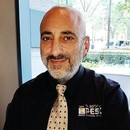Colleges and universities can communicate best internally if they share the same language, and that goes for communicating with other institutions as well. It also helps them communicate clearly and easily with the federal government, which requires reporting to determine student financial aid, accreditation and more.
To achieve compliance with the standard, Santy and others connected to CEDS have taken a methodical and collaborative approach, relying on insights from higher education stakeholders. These stakeholders voluntarily follow the standards and also help evolve them through workgroup meetings that have grown larger and more involved over the years.
While higher education institutions have continuously engaged CEDS for help with things like government reporting, the goal is to adopt an agreed-upon set of standards at the very basic level of data collection — for demographic information, for example — so institutions don’t need to edit their data for every partner or agency that requests it.
“Without that set of standards and a community and a conversation that’s focused on interoperability, collaboration and cost-savings, you wind up continuing to have these conversations in little pieces,” says Santy.
READ MORE: Learn how to build a better data dashboard in higher education.
What Are Common Education Data standards (CEDS)?
CEDS is being developed at all levels of education, from pre-kindergarten through what the government calls postsecondary education, roughly defined as any kind of learning after high school.
When CEDS began 13 years ago, some groups, including the Postsecondary Electronic Standards Council (PESC), had already been trying to achieve a united standard across the country, though the nonprofit had plenty of competition. Michael Sessa, PESC’s longtime president and executive director, says it didn’t take much convincing for his group to welcome CEDS as a partner.
“We want to lead, but we also can’t leave anyone behind,” he says. “That’s the primary thing: Not everybody’s going to use the PESC standards, even though we’re a nonprofit and we think we’re the best. Most organizations that you find will say, ‘Standards are great, as long as you use ours,’ and that’s an anti-standards message. So, what we do with CEDS is we align as closely as we can.”
In a technological sense, that alignment is necessary to avoid the pitfalls that plague competitive industries — just consider the smartphone. If an Apple iPhone user wants to connect via FaceTime with a long-distance relative, they’ll need another solution if that relative is using an Android operating system. In data analytics, that means getting as many stakeholders as possible to share a vocabulary so that data can be moved from one analytics tool to another without a major overhaul.












